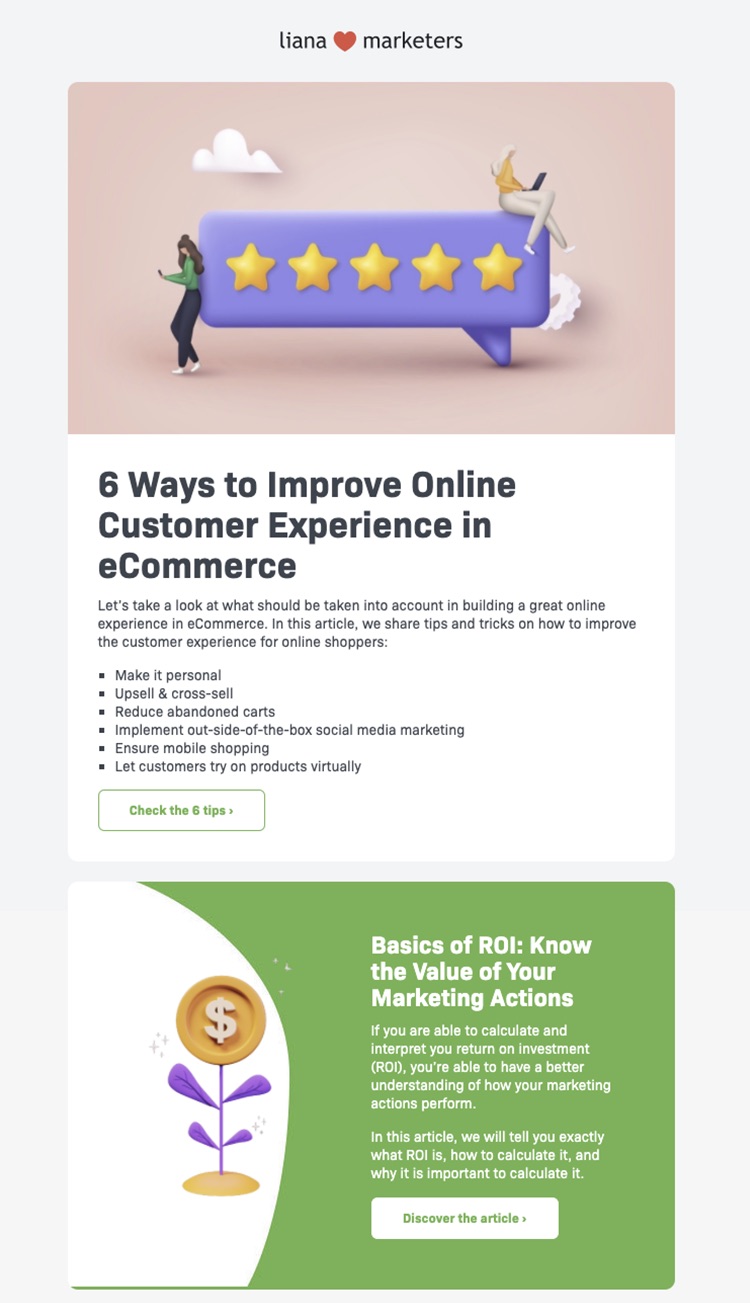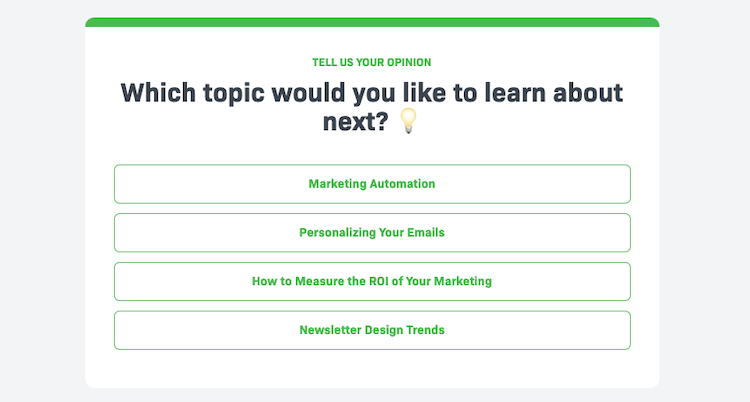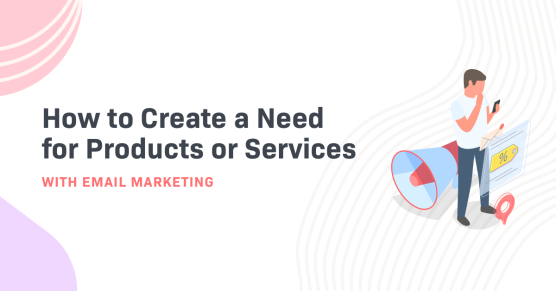Sometimes you hear people say that salespeople and marketers create needs. In reality, however, marketing or selling isn’t really about creating new needs, but offering a solution to an already existing need that has been identified by a company.
However, potential customers are not always aware of this need themselves – at least at first. This creates a challenge for salespeople: how do I get a customer to want a product or service that they don’t know will benefit them yet? If you try to sell something to a person who hasn't even recognized their own need yet, they’re very likely not going to be interested in what you're offering.
Before the customer is ready to make – or even consider making – purchases, you need to convince them that A) the product or service you offer can solve a problem they have, and B) your solution is the best option for them.
Email marketing is a great method for this. Take a look at these 6 tips and learn how to successfully convince your potential customers that they need your product or service with emails:
- Teach with high-quality newsletter content
- Take advantage of recent news, trends, and seasons
- Create a sense of urgency
- Share customer results and experiences
- Remind a customer of their need
- Offer complementary products
1. Teach with high-quality newsletter content
A simple way to get a potential customer to want to purchase from you is by presenting a relevant problem, challenge, or opportunity that your product or service is somehow linked to.
Teach the reader about the topic of your expertise with useful, high-quality content. Some call this “selling without selling”.
For example, if a person interested in photography watches a camera store’s video on the Best Tips and Tools for Shooting Portraits, the video will likely make them want to buy new camera supplies. Perhaps some of the products mentioned in the video could help them take better pictures, and therefore help them get better at their craft.
Sharing high-quality and useful content not only helps to convince your potential customers that they need the product or service in question, but also helps create a reputable image for your company. Because of this, it is likely that the customer will choose you over your competitors, once they are ready to buy.
Newsletters are a great way to share high-quality content to your potential customers. You can share shorter content such as quick tips straight in the email itself, or use links to direct the reader to your longer content such as blog posts, videos, guides, or websites.

At Liana, we share useful tips on digital marketing and communications in our monthly newsletter. If you want to, you can subscribe to it using the form below.
If a specific topic caught some of your subscribers’ interest, you can also send them targeted messages with more information about the same topic. You can, for example, send them more tips, videos, or even special offers related to a specific article they read.
You can do this by downloading the list of people who clicked on a particular newsletter link, and sending them a new email. Using marketing automation reduces the amount of manual work, and allows you to schedule emails to be sent automatically after a certain amount of time.

A poll feature allows you to ask the reader directly which topic they would like to receive more information about.
Modern email marketing tools, such as LianaMailer, allows marketers to view each clicker of a newsletter link individually. This can significantly benefit sellers in the B2B sector, for example.
2. Take advantage of recent news, trends, and seasons
Trends, news, seasons, and other current issues create needs, so make sure to keep them in mind when planning your marketing.
Does your online store offer next day delivery and gift wrapping? Make sure to highlight these competitive advantages in your newsletter during Christmas time, for instance: this way a person who’s buying gifts at the last minute might choose to order them from your online store instead of buying them at a local department store.
Or – did one of your competitors appear on the news because of their unethical behavior? As a result, many customers may want to switch their product or service provider. You can, for example, share positive customer reviews in your newsletter to help show that your business is trustworthy.
3. Create a sense of urgency
Creating a sense of urgency is a great marketing technique. If a product or a free trial, for example, are only available for a limited time, customers have to react quickly in order to not lose the opportunity.
Examples of emails that create a sense of urgency:
- An offer or a discount code that is only valid for a limited time
- An email notification of items or tickets that are almost sold out
- A teaser of an upcoming product launch, if the product is expected to sell out quickly
- An email notification of a previously sold-out product that is now back in stock
4. Share customer results and experiences
By sharing customer reviews and results in your newsletters, you’re showing your potential customers what they could gain from using your product or service – or what they’re possibly missing compared to their competitors, when they don’t use it.
What rating do your customers give to your online store services on a scale of 1-10? What kind of results have your customers achieved with the help of your gym program? How did your solution increase a company’s revenue by X percent in Y amount of time?
Let the numbers speak for themselves, and use them to grab the reader’s attention. For example, “98% of our customers recommend us” sounds more convincing than “most of our customers recommend us”.
We sometimes share the excellent results that our customers – digital marketing and communications specialists – have achieved in our newsletters too.
5. Remind a customer of their need
Customers are often fully aware of their own needs – a person has to buy food to eat or clothes to wear, for example, regardless of whether they see an ad about it or not.
However, when it comes to certain products, the customer might really take their time to weigh the different options available, and give the purchase careful consideration. Customers often browse through various online stores, and still end up not purchasing anything at all – even if they’ve already found some suitable options. If the need isn’t urgent, they might easily forget a product they’ve been eyeing.
However, you can remind them of their need by automated emails. A common way to do this is by using shopping cart reminders, or emails about the items a customer has added to their favorites.
According to Moosend, on average, about 11% of online shoppers return to buy a product they were previously looking at, after they’ve received an abandoned cart email.
6. Offer complementary products
Purchasing one product or service may create a need for other products or services as well. Email marketing is an excellent tool for upselling and cross-selling campaigns.
For example, a person who has ordered a new bike might also need a new helmet, or a person buying a laptop might also need an antivirus software or a protective sleeve. Offer relevant complementary products or services to your customers via email.
Want to learn more about email marketing?
Are you an entrepreneur who’s just getting started with email marketing, or perhaps a professional who would like a recap of the basics? Download our Email Marketing for Beginners guide and learn more!



![How to Get Started with Podcasts? [Infographic]](/media/blog/podcast-article/cache/starting-your-own-podcast-article-cover-378x214,c.png)